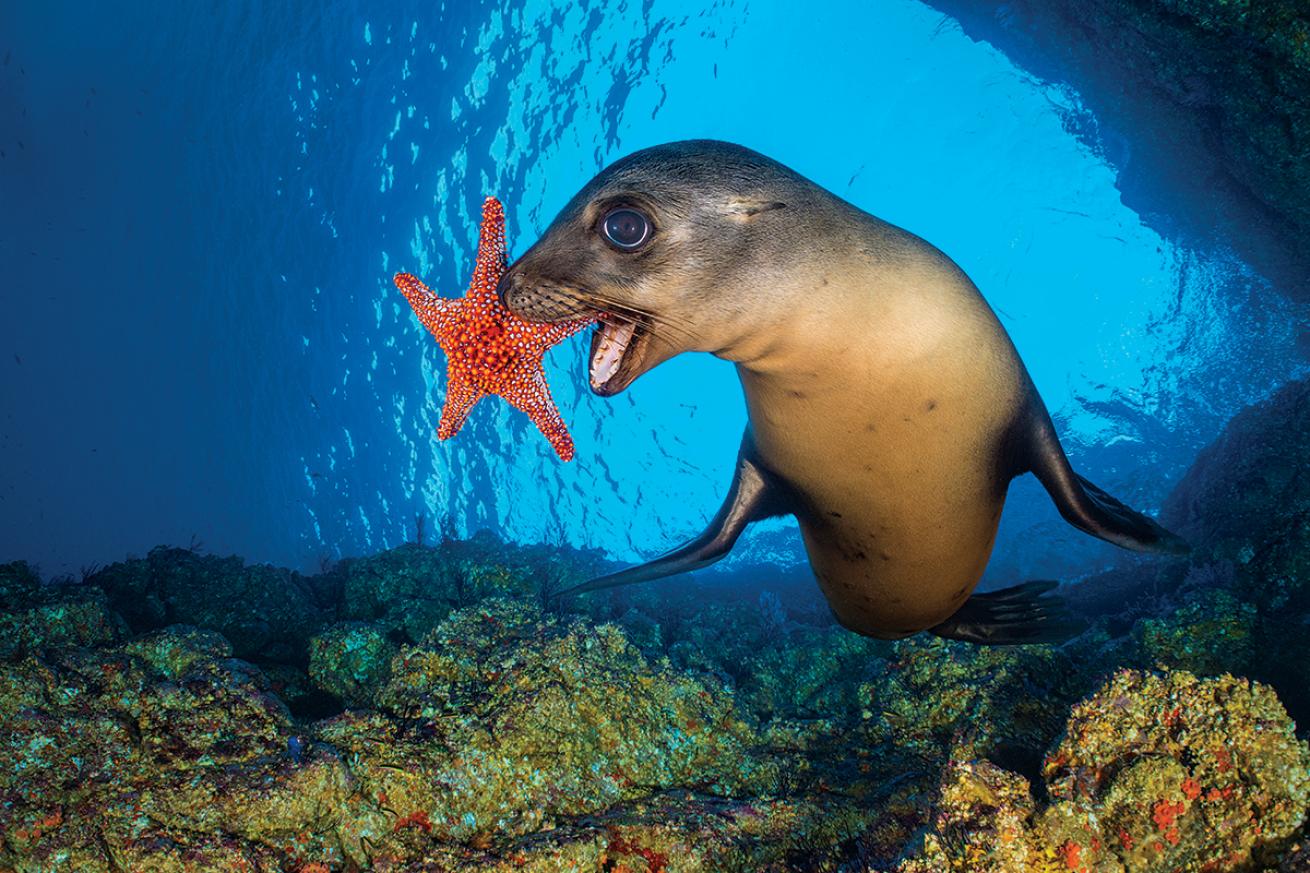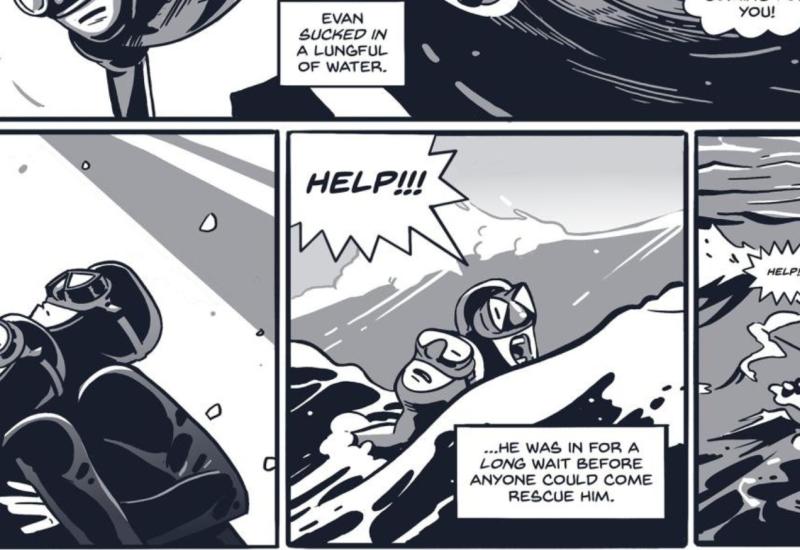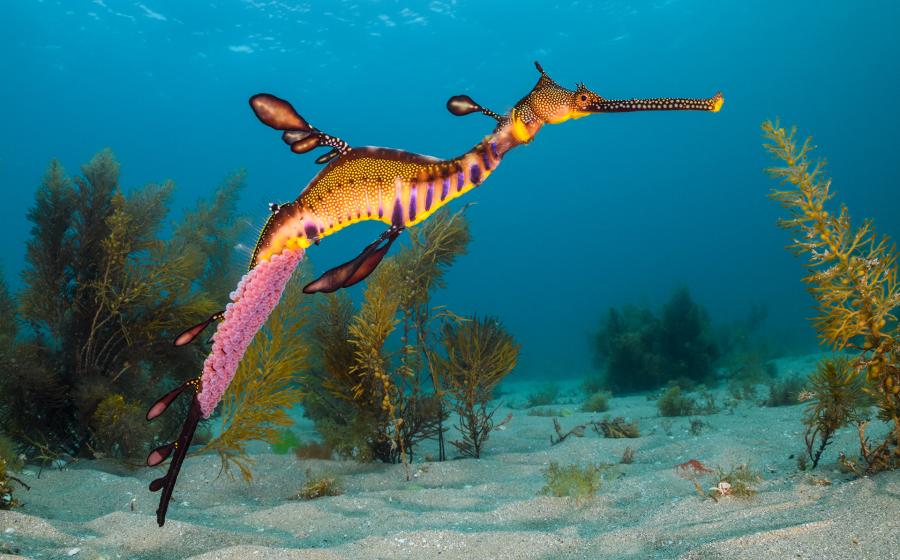How to Take Great Sea Lion Photos

Alex MustardSea lion pups refine their hunting skills by dropping and chasing objects, like starfish, making a great opportunity for close-up, character-filled pictures.
Sadly, I am writing this shortly after the passing of the great underwater photographer, and first-class human, Ernie Brooks, best known for his monochromatic visions of Californian kelp forests and their iconic resident, the sea lion. Sea lions thrill photographers by elevating our pictures with their charisma, and they enrich our dive experience with their joyful antics. For many there is simply no better subject for underwater photography, and I’ll forever be reminded of Ernie when I see them.
Sea lions thrive across the cooler parts of the oceans that are rich with fish and have quiet coasts for their haul-outs.
The eastern Pacific is a sea lion stronghold, with famous dives in British Columbia, California, Galapagos, Mexico and more. The species and water temperatures vary, but the photographic challenge remains the same: capturing elegant pictures of dark, fastmoving subjects in water that is usually gloomy.
Tip 1: Eyes and Whiskers
Fortunately for photographers, sea lions are blessed with both cuteness and curiosity. And photos that deliver these big eyes and scruffy whiskers to the viewer will always win praise. The youngsters are particularly friendly, and many photographers time their sea lion trips for peak pup season. This is actually a few months after the pups are born, when they are still small and playful, but big enough to venture out into divable depths for interactions. In La Paz, Mexico, for example, prime time is fall, when the pups born in summer leave their crèche pools. These youngsters have energy to burn, and I can’t help but feel the parents must be relieved when divers take over entertainment duties.
A photographer’s first objective is to attract pups into photographic range. I find pups are drawn to the calmest, slowest-moving divers. You can also try to make yourself a little more attractive by wearing something colorful, like a bright snorkel or hood.
Occasionally, you can be too successful; if this happens, just enjoy the experience because it is pretty much impossible to take photos with a pup squeezed between you and your camera. The good news is that the energetic pups need to breathe regularly, so it won’t be long before they let go and race to the surface. At this point I breathe out, which gives time for my bubbles to rise and dissipate, and for me to take a test frame to check my settings.
Tip 2: Poetry in Motion
If you didn’t know better, you’d assume sea lion skeletons are made of rubber. Watch one swim and you’ll see that their speed is matched only by their maneuverability—their bodies seem able to bend in several directions at once. Capturing this movement sharply is a technical challenge. Lazily, I could just tell you to use a fast shutter speed—at least 1/125. But in the dark waters where sea lions live, this isn’t always possible, and when they flash past the lens, it’s still not fast enough. The correct advice is more complex: Use the fastest shutter speed you can. If they are speeding, set it as fast as possible; if they are posing on the seabed, you can use slower settings.

Alex MustardThe acrobatic shape of sea lions is clearest in silhouette images.
You’d think strobes would be perfect to freeze the action—and they are certainly essential to pick out those facial features. However, sea lions are often encountered in turbid water. This means that when you turn up your strobes enough to illuminate their dark fur, backscatter becomes a big problem. You still need strobes, but should get as close as possible and avoid blitzing them with light to keep scatter to a minimum.
An alternate solution for movement is to accentuate the blur by experimenting with long exposures. I like to use an accelerated panning technique, where I shoot on first curtain sync while panning the camera in the same direction as the subject, but faster, overtaking it and accentuating the movement blur. For the best panning effects, you’ll need a slow shutter speed, somewhere between 1/4 and 1/15 usually works best. You can achieve this by dropping the ISO setting or closing the aperture. You don’t want a completely blurred image, and you still need a good burst of flash to mix the movement with sharpness and produce a pleasing picture.
Ernie Brooks typically shot sea lions as silhouettes, perfectly timed natural-light images framed against bright open water or the surface. Turning off your strobes focuses the viewer’s attention on the dynamic shape of this marine mammal. The message is even clearer when you emulate Ernie’s art and process out the distracting color. He usually completed his compositions with elements that contrast with the sinuous sea lion, such as jagged rocks, twisting kelp and spearing sun rays.










